Exploring Historic Leesburg For All Ages
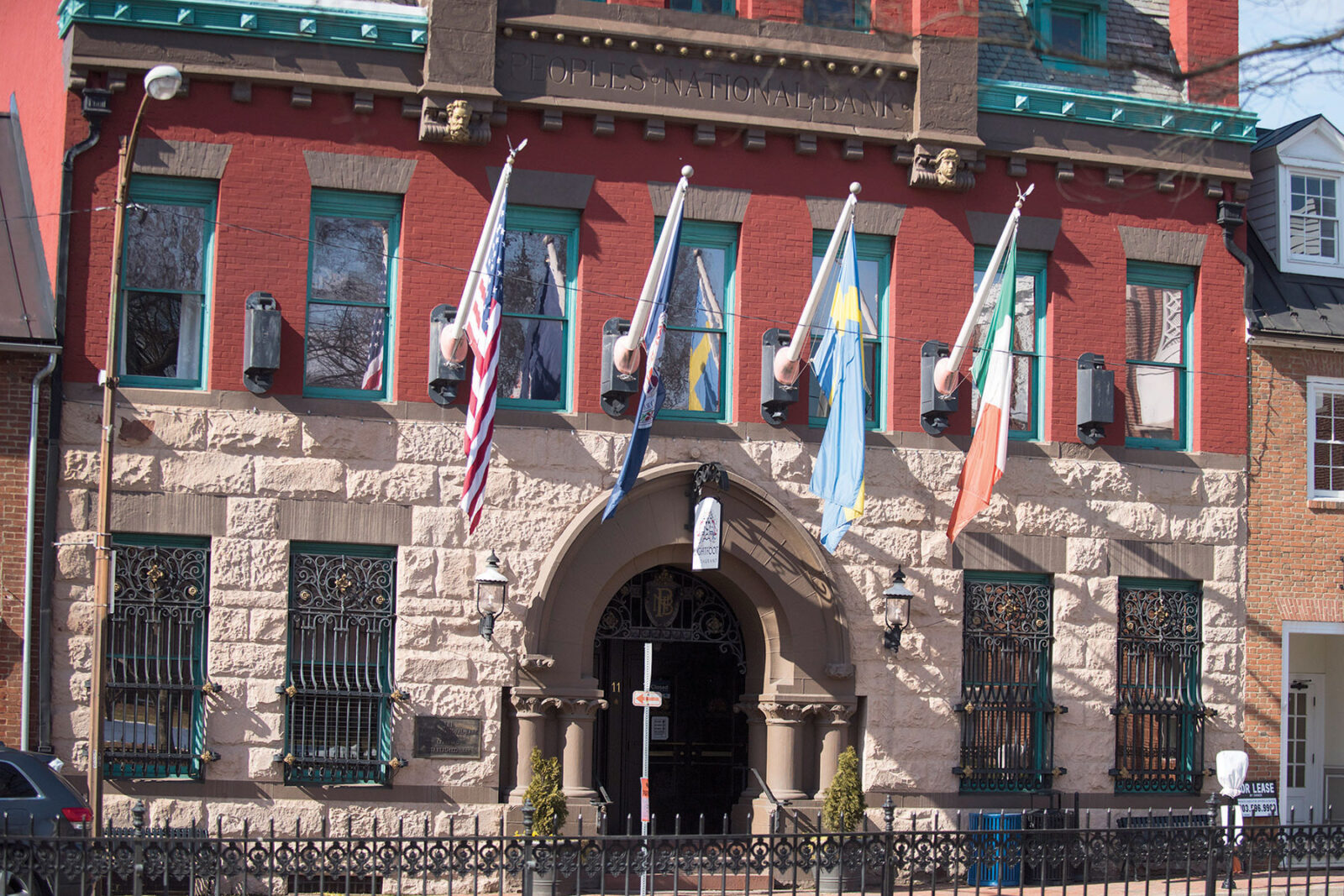
Written by Heidi Baumstark
Exposure is infectious. That’s a good thing when the experience is a positive one. For Leesburg resident Carla Mueller, exposure to a variety of cultures put her on a path of exploration and sparked a keen curiosity and appreciation for intricate architecture that mirrors an area’s heritage. This led her to launch a new business in 2020: Historic Leesburg Walking Tours.
“This is my passion,” she says. “I see the tour as an opportunity to combine architecture and history, engage with people, and offer something out of the ordinary.” As with many passions, they’re hard to hold in. For Mueller, this drive steered her to start sharing her zeal with others.
“Growing up in an Air Force family, I was exposed as a child to a myriad of cultures,” she says. “We lived in England and North Africa. As a young girl, I recall visiting Leptis Magna, a 7th century Roman city on the Mediterranean coast of Libya, and being astounded by what remained of the ancient architecture.” Her childhood experiences honed her observation skills, fostering a life-long love for the connection between architecture, culture, and history.
Prior to launching her business, Mueller worked for the federal government and a professional services firm. She has lived in Northern Virginia for over 20 years, first in Fairfax, now in Leesburg, and has gained knowledge about the area since boarding her horse in Loudoun.
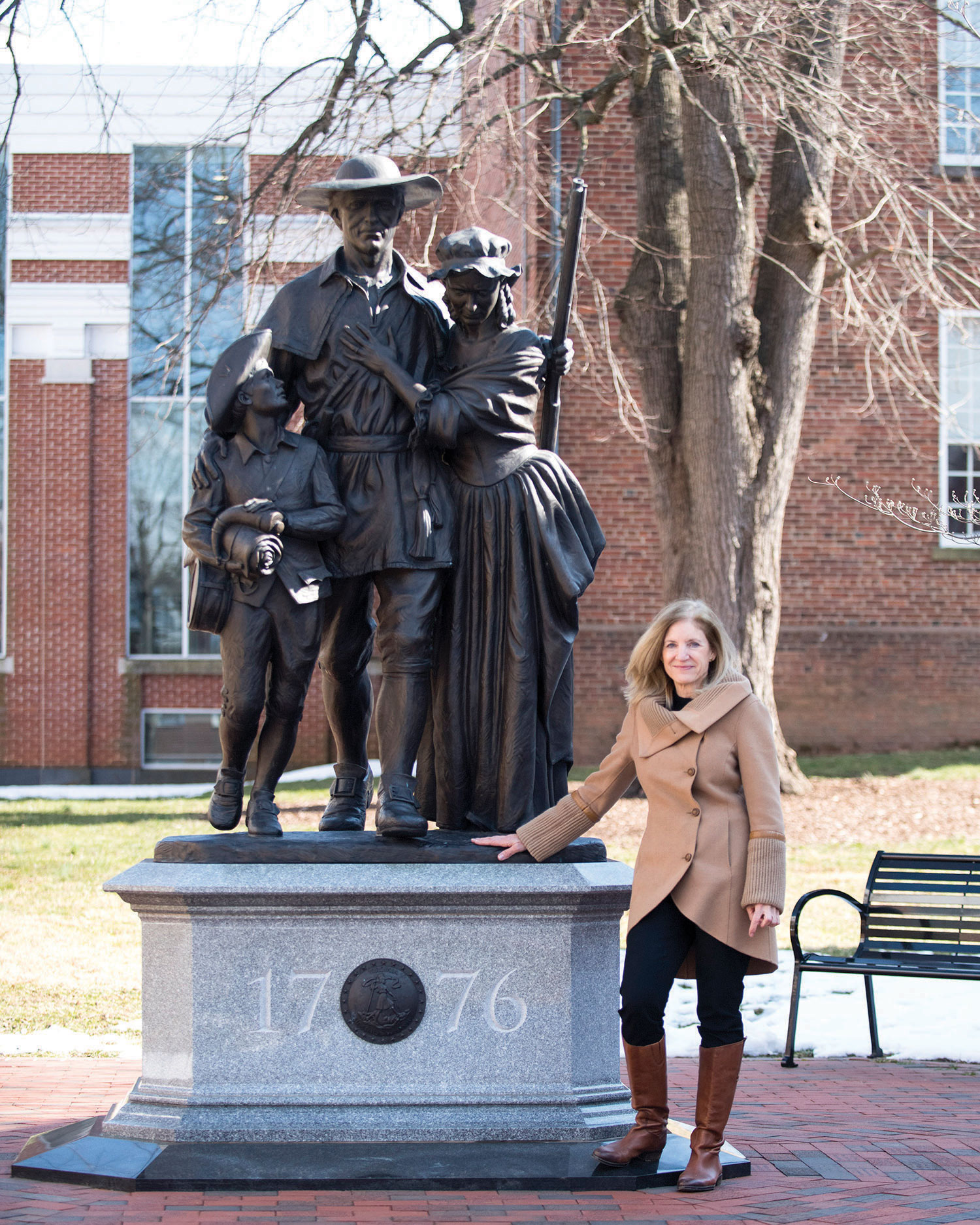
Carla Mueller. Photo by Joanne Maisano.
The experience is a great outing for all ages: families, couples, small groups, and private tours. Tours last about 75 minutes and are roughly a mile long, beginning at Leesburg Town Hall with stops made at over a dozen historic sites in downtown Leesburg. At each stop, Mueller shares the history and local lore, and points out architectural details from a variety of styles: Romanesque Revival, Georgian, Italianate, Gothic Revival, Federal, Classical, and rustic frontier-like construction of early Leesburg, which has served continuously as the county seat of Loudoun County, established in 1757.
“My first stop? A Leesburg landmark — the Tally Ho Theater — a circa 1932 art-deco theater/concert hall next to Town Hall,” she says. Then it’s on to the next stop. “I want to keep it moving, since people can only absorb so much. I want to give a flavor of the town and sprinkle in interesting anecdotes.”
For example, lore has it that George Washington briefly used an attraction on the tour as a headquarters when passing between Winchester and Alexandria as a militia colonel late in the French and Indian War (1754-1763), a British victory that culminated in the 1763 Treaty of Paris.
A Little Loudoun History
On March 25, 1757, by act of the Virginia House of Burgesses, Loudoun County was established as a breakoff of western Fairfax County named for John Campbell (1705-1782), the Fourth Earl of Loudoun (also known as “Lord Loudoun”). As a Scottish nobleman, Campbell served as commander-in-chief for all British armed forces in North America and governor-in-chief of the Virginia colony, though never stepped foot on the colony’s soil, so was represented by resident deputies.
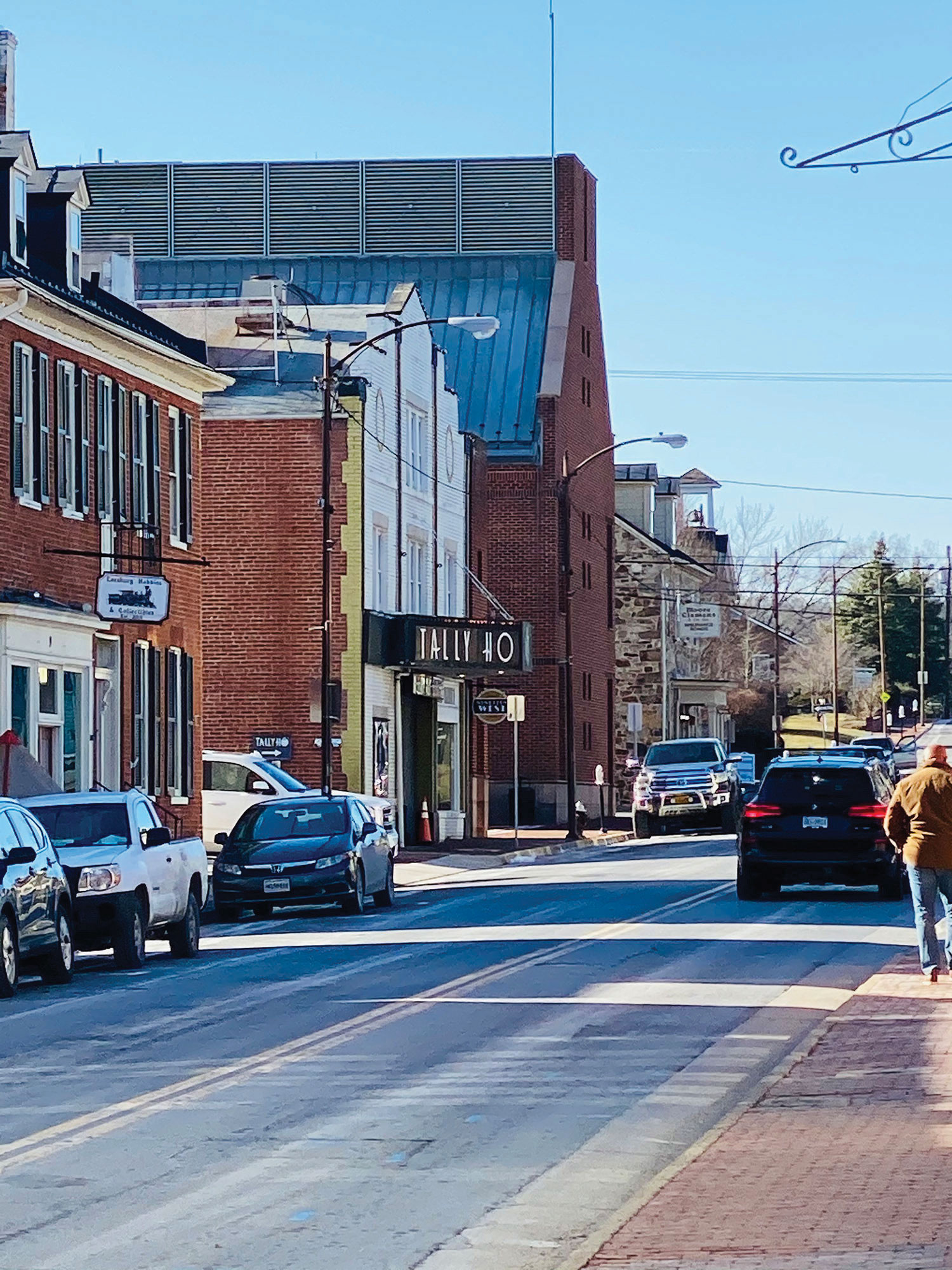
Tally Ho Theater. Photo by Heidi Baumstark.
Now to Leesburg, But First “George Town”
The genesis of Leesburg (originally “George Town”) occurred before 1755 when Nicholas Minor Jr. acquired land around the intersection of the major north-south direction of the Carolina Road (U.S. Rt. 15, King St. in downtown) and the east-west oriented Potomac Ridge Road (VA Rt. 7, Market St. in downtown) and established an ordinary (tavern) there. Records show Minor was born “before 1706” about 115 miles southeast of Loudoun in Westmoreland County in colonial Virginia’s Northern Neck peninsula. As part of the Fairfax Militia, he received letters from George Washington who was then colonel of the Virginia Regiment and commander of all the Virginia forces during the French and Indian War.
In 1757, Minor dubbed the small collection of buildings around his tavern “George Town,” in honor of King George II, the reigning monarch of Great Britain. But that name was short lived. Because the following year in 1758, the newly appointed lieutenant governor of Virginia — Francis Fauquier — signed off on the name change from George Town to Leesburg. It was renamed Leesburg to honor Thomas Lee (1690-1750), who was born in Westmoreland County. In 1749, the British Crown bestowed on Thomas Lee the title of acting governor of Virginia, which he held until his death a little more than a year later, Nov. 14, 1750.
As is popular belief, Leesburg was not named for Thomas Lee’s son, Francis Lightfoot Lee, who lived in Loudoun, nor is the town named after Robert E. Lee, his great, grandnephew, who was not even born until 1807.
The 1759 “Plan of Leesburg” Maps Out the Town
On Oct. 12, 1758, the Virginia General Assembly officially founded the Town of Leesburg (located approximately in the middle of Loudoun) on Minor’s 60 acres that he had laid out, which included the establishment of the county courthouse at the crossroads, including an office for the county clerk, “gaol” (jail), gallows, and stocks. Leesburg’s Thomas Balch Library online resources include the “Plan of Leesburg” dated 1759 drawn by John Hough. Minor hired Hough to survey and plat his 60 acres subdivided into 70 lots. This 1759 map shows those 70 lots with a traditional grid-like street design divided by three north-south and four east-west streets. The town trustees included Minor and two of Thomas Lee’s sons: Philip Ludwell Lee (1726-1775) and Francis Lightfoot Lee (1734-1797). With the renaming of the town to Leesburg, a new identity was formed.
Highlights on Mueller’s Tour
Loudoun County Courthouse — 10 N. King St.
“There is much that could be said about the Loudoun County Courthouse, but I choose to point out the most saqqlient historical points and architectural features,” Mueller says. The original courthouse at the intersection of King and Market streets dates to 1758 when Minor set aside two half-acre lots for the courthouse and jail complex. But court first met at the property of Minor until construction of the formal courthouse was completed in 1761 on land that was deeded by Minor to Francis Lightfoot Lee, the appointed lieutenant of the county militia. On Aug. 12, 1776, from the doorway of this first courthouse, the Declaration of Independence was read; one of its signers was Francis Lightfoot Lee.
A second, larger courthouse was constructed in 1811 with four large stone pillars. Barely, it survived the 1861-1865 Civil War. Thanks to local builder Joseph Lafayette Norris (1834-1908) of the famed Leesburg Norris Brothers, he saved several pieces of those four pillars, the remnants of which are in the courtyard of the present structure. The current courthouse is the third one built on the property erected in 1894. It displays classical design elements including Corinthian columns, semi-circular arched windows, and an octagonal cupola, Mueller noted. Courthouses not only serviced legislative and judicial needs, but were also social and commercial centers, especially on court days. Locals attended court days to watch street entertainers, buy and sell goods, and even view public executions. Slave auctions were regularly held at the courthouse during court days; these auctions continued until the 13th Amendment to the Constitution that abolished slavery in 1865.
The grounds include monuments to soldiers who fought and died in various wars: World Wars I and II, Korean and Vietnam Wars, as well as the American Revolution. In 2003, the U.S. National Park Service designated the Loudoun County Courthouse as a site on the National Underground Railroad Network to Freedom for its role in the struggle for freedom and equality.
In July 2020, a Confederate soldier statue that stood on the courthouse grounds for over a century was taken down. “Workers removed this ‘silent sentinel’ and returned it to the United Daughters of the Confederacy,” Mueller says. Stocks and whipping posts have also been relocated off courthouse grounds, which were vivid images of the time’s harsh law enforcement methods.
Lightfoot Restaurant — 11 N. King St.
Directly across the street from the courthouse is Lightfoot Restaurant. Built in 1885 as the People’s National Bank, the building is one of two examples of Romanesque Revival architecture, which includes rusticated stone on the first story, large central front gable, and bold arches over the door and center window on the third story. (The second example in town of Romanesque Revival design is St. James’ Episcopal Church on 14 Cornwall St., N.W. erected in 1895.)
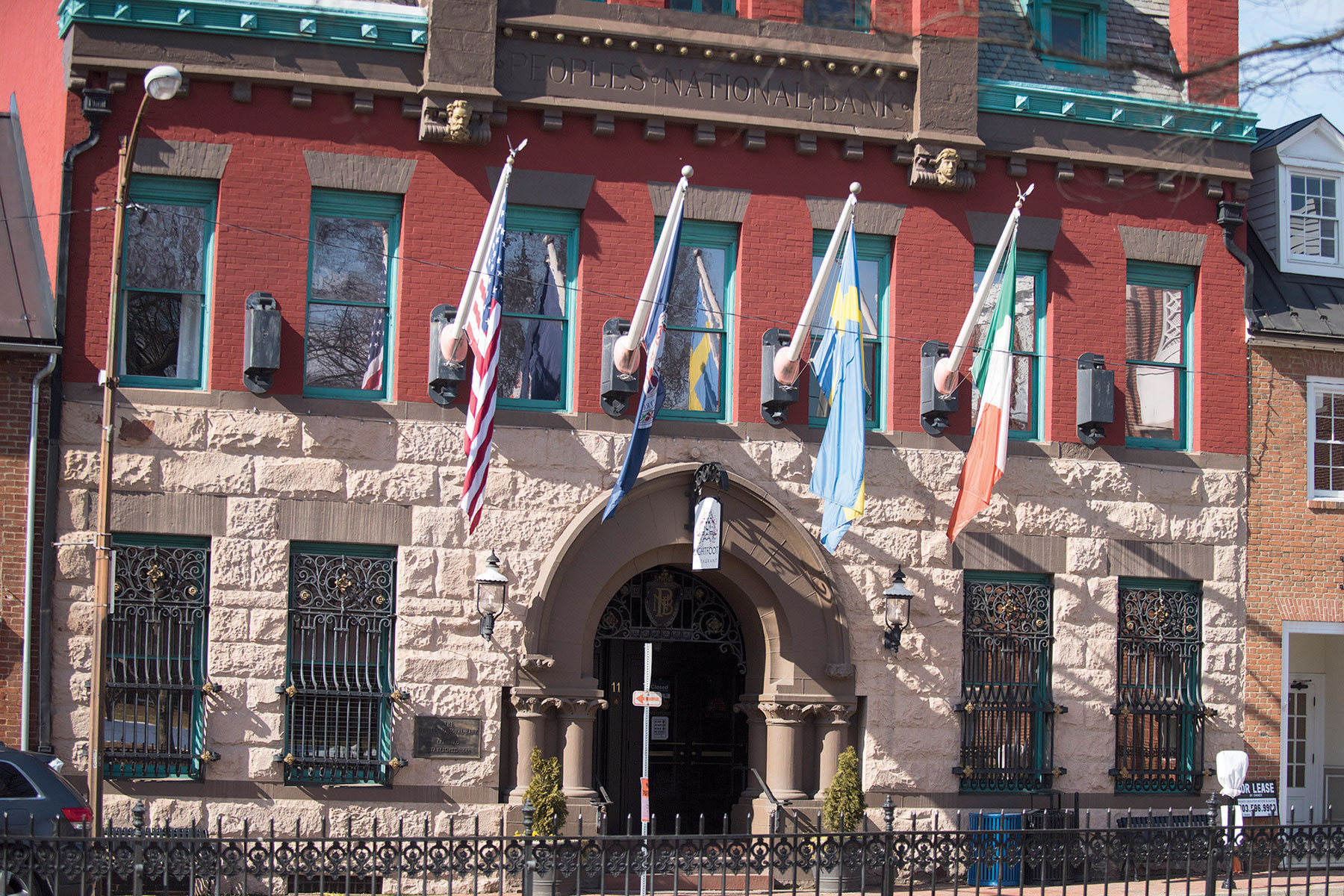
Lightfoot Restaurant (originally Peoples National Bank). Photo by Joanne Maisano.
Lightfoot Restaurant is named after Francis Lightfoot Lee, Virginia colony’s representative for the signing of the Declaration of Independence, and is sometimes referred to as “Loudoun Lee.” The People’s National Bank building was designed by the same architects who designed the Thomas Jefferson Building at the Library of Congress in Washington, D.C., which was completed in 1897. In 1905, the Norris Brothers redesigned the bank building, maintaining its essential character, but adding more detail, including
he ornate roof over the small dormers. The building was renovated again when it became Lightfoot Restaurant in 1999, but most of the interior was maintained.
Glenfiddich House — 205 N. King St. N.W.
When asked if there are any favorite stops, Mueller answered, “I have to say one that rises to the top is the privately owned Glenfiddich House (formerly Harrison Hall), which is listed on the National Register of Historic Places. It’s the total package.” The first section of this house was completed in 1780. In the 1850s, the Norris Brothers built the main section of the home for Henry Harrison and his wife. It is the most elaborate example of the Italianate style in Leesburg, featuring a low-pitched hipped roof, ornately carved portico, and deep eaves with paired brackets.
The Harrisons and their three daughters lived there throughout the Civil War. During that period, Leesburg “frequently changed hands as both armies traversed the area during the Maryland and Gettysburg campaigns,” Mueller explains. Harrison Hall became a hospitality center for Confederate officers passing through the area. After the Oct. 21, 1861 Battle of Ball’s Bluff (two miles from downtown Leesburg), a victory for the south, wounded Confederate soldiers were tended to at Harrison Hall.
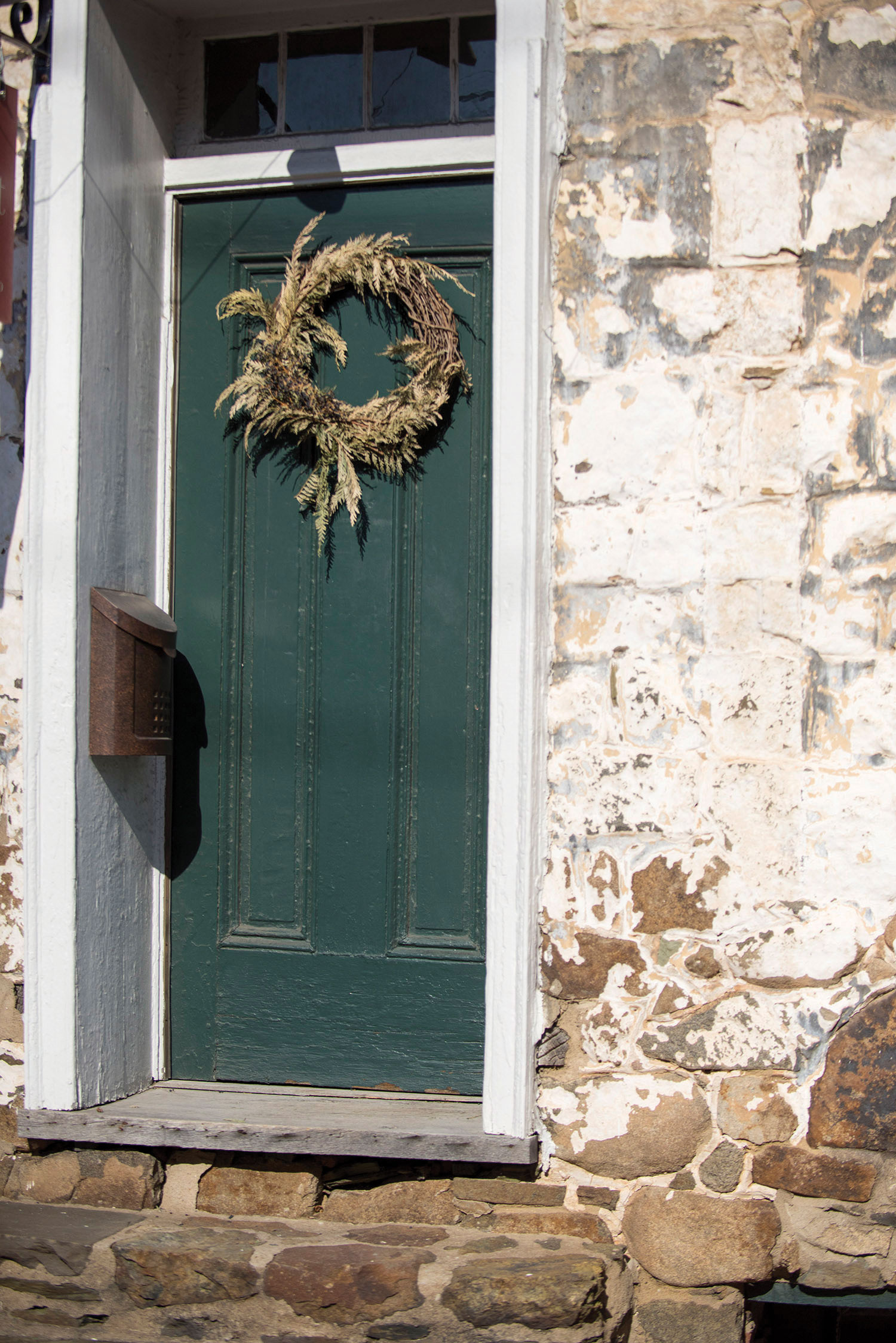
Stone House c.1760. Photo by Joanne Maisano.
The following fall in September 1862, Robert E. Lee (1807-1870) and his Confederate army traveled through Leesburg on their way to invade the north. On Sept. 4, 1862, Lee was treated at Harrison Hall for hand injuries after his horse, “Traveller,” was spooked at Second Manassas five days earlier. The next day on Sept. 5, General Lee held a crucial meeting in the dining room: a council of war with generals Thomas J. “Stonewall” Jackson, J.E.B. Stuart, James Longstreet, and Lewis A. Armistead to plan the invasion of Maryland that ended with the Battle of Antietam on Sept. 17, 1862, which remains the deadliest, bloodiest one-day battle in American military history.
“It is believed this was the only time when all of these generals were in a room at one time,” Mueller says. With the Union claiming victory at Antietam, it provided Lincoln the opportunity to announce the Emancipation Proclamation issued Jan. 1, 1863 as the nation approached its third year of war. This is one reason Antietam is often referred to as a key turning point of the war. This Proclamation declared that “all persons held as slaves” within the rebellious states “are, and henceforward shall be free.”
Mt. Zion United Methodist Church — 12 North St. N.E.
Mt. Zion United Methodist Church is a beautiful example of 19th century Gothic Revival architecture. It is distinguished as the oldest-continuing African American Methodist congregation in all of Virginia. But before Mt. Zion was built, African Americans attended the 18th century Old Stone Church, a mixed-race congregation at Liberty and Cornwall streets.
The Old Stone Church was built on one of the original 70 lots owned by Minor. On May 11, 1766, Minor deeded “Lot 50” to Methodist layman Robert Hamilton for “no other use but for a church or meeting house and grave yard,” according to the General Commission on Archives and History for The United Methodist Church. It is the earliest known Methodist-owned property in America located at 110 Cornwall St. N.W. Though this stone church is no longer standing, the Old Stone Church Cemetery remains, which also includes an informational kiosk on what is now called the Old Stone Church Site.
Years before the Civil War started in 1861, the Old Stone Church congregation split in 1848 over the slavery issue. After the Civil War, the African American community raised $250 and built Mt. Zion in 1867. Southern sympathizers formed Leesburg Methodist Episcopal Church, South, which is today called Leesburg United Methodist Church on 107 W. Market St.
Steps away from Mt. Zion, Silas Randall (1873-1957) lived at 108 Church St., N.E.; he operated a horse training stable around the corner on North Street, just west of Mt. Zion. Shortly after 1900, he moved to Loudoun when fox hunting was becoming popular in the area and began his long career in horse racing and hunting. He trained horses for many prominent residents, including Westmoreland Davis, Virginia’s governor from 1918 to 1922. Prior to his election, Davis served as Loudoun Hunt’s Master of Foxhounds in the early 1900s and Randall worked as groomsman for the Loudoun Hunt. Randall made news when in 1934, he won a steeplechase race at the Virginia State Fair at the age of 63. He is buried at Mt. Zion Community Cemetery at 209 Old Waterford Rd., N.W.
Loudoun Museum’s Log Cabin — 16 Loudoun St. S.W.
Loudoun Museum is a rare diamond-notched log cabin, which serves as an example of rustic frontier architecture from the late 1700s. Dr. Joseph Rizzo, executive director of Loudoun Museum, said the town of Leesburg owns the structure that is referred to as the “log cabin,” maintained by the non-profit museum. “The diamond notch is created by clipping the corners off the log, leaving a diamond shape; and each one is fitted into the ones above and below, eliminating the need for nails or pegs,” Mueller says.
This log cabin was built in the early 1760s and is one of the original “covenant” houses preserved in its original form. Minor included restrictive covenants upon selling his town lots: If the purchaser failed to build a suitable house that met the requirements within three years — as required by the covenants and codified in the deed — the property reverted back to Minor.
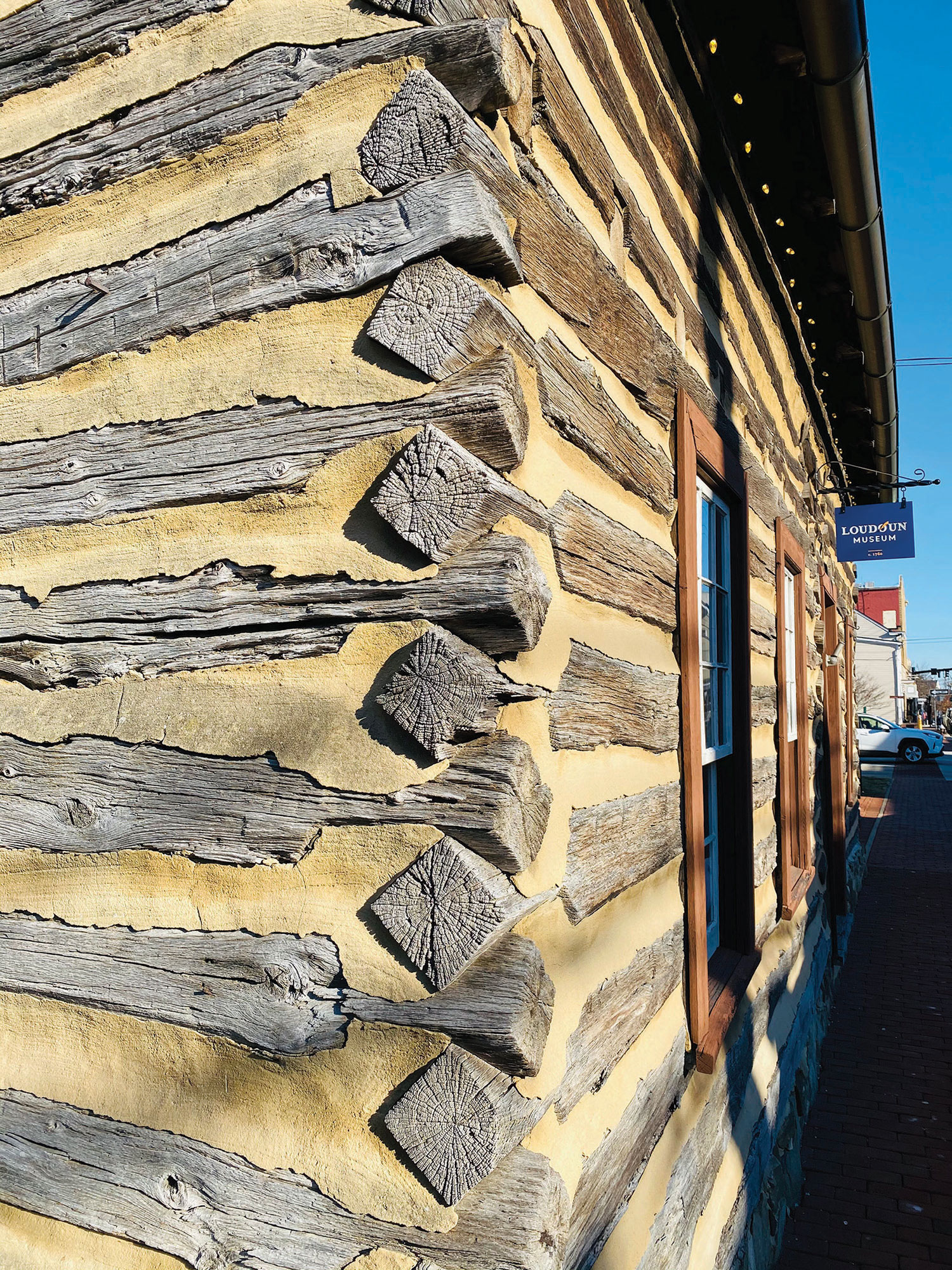
Loudoun Museum Log Cabin dates to 1760s, during Leesburg’s earliest days. Photo by Heidi Baumstark.
In the mid-1970s, the log cabin was slated for demolition. But the Loudoun Restoration and Preservation Society (founded in 1967, but now called Loudoun Preservation Society since 2009) acquired it, shored up the chinking in the logs, and repaired the stone foundation. In 1970, the Leesburg National Register Historic District was listed on the Virginia Landmarks Register and the National Register of Historic Places. Loudoun Museum operates a second historic structure on the museum property dating to the 19th century, which houses more artifacts and interpretive panels, and offers a space for events and lectures. The museum is open Friday – Sunday, 10 a.m. – 4 p.m.
What Others Are Saying
“I’ve seen a lot of interest [in the tours]; it’s something that takes people away from their day-to-day routines,” Mueller says. “After one of the tours, a professor from Northern Virginia Community College said how she’s lived here for 20 years and never knew these facts. It’s one thing to read about it — and another to experience it.”
Another comment Mueller heard was from a young couple looking for something different. The tour triggered their curiosity about the past, and they enjoyed it so much that they plan to return this summer and take it again. Others have shared how the tour made them aware of the many restaurants and coffee shops in town. Especially during these COVID times, this is a safe, healthy activity that gets people out of the house and directs their focus on something interesting and outside of themselves.
After all, anything that has survived generations has stories to tell — to walk where history was made. Maybe it’s time to get exposed. ML
To book a tour or find more details, visit historicleesburgwalkingtours.com or call 703-627-2840.
Published in the March 2021 issue of Middleburg Life.


